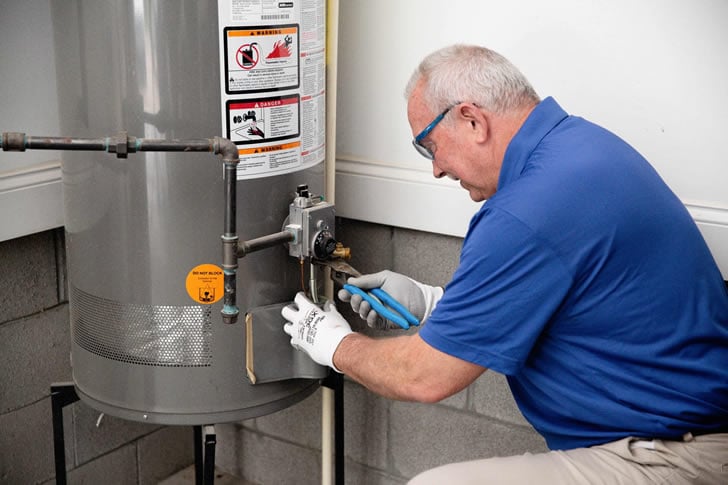Nbr 13531: An Analytical Perspective
Nbr 13531 represents a significant element in its respective industry, where understanding its nuanced applications can benefit professionals greatly. This article delves into its comprehensive analysis, providing insights, data comparisons, and expert reviews, thus offering a deeper understanding to support industry advancements.

Understanding Nbr 13531
Nbr 13531 has emerged as an important identifier within its industry context, often serving as a part number or model designation that plays a vital role in various operational processes. While specific details related to Nbr 13531 remain covered under an umbrella of proprietary or commercial confidentiality, understanding its broad implications can assist professionals in making informed decisions. In today’s fast-paced business environment, the ability to quickly discern and utilize such identifiers can be a significant competitive advantage.
Significance in the Industry
The classification "Nbr 13531" could pertain to anything from an electronic component to a machinery part or even a chemical compound. In sectors such as electronics, manufacturing, or pharmaceuticals, identifying such a unique code helps streamline procurement, inventory management, and operational efficiency. It not only aids in distinguishing products but also in ensuring compliance with industry standards. This specificity reduces the risk of errors and miscommunications that often plague large-scale production and supply chain operations.
Advantages of Systematic Identification
Having a systematic identification like Nbr 13531 allows businesses to:
- Improve Inventory Tracking: Streamlining inventory processes by utilizing unique identifiers helps prevent stock issues and improves order accuracy. For instance, in a warehouse setting, each item can be tracked with precision, reducing the time taken to locate products and ensuring accurate order fulfillment.
- Enhance Quality Control: Identifiers assist in maintaining stringent quality control measures by separating compliant products from those that require further checks. In manufacturing, this can mean the difference between shipping a defective product and maintaining a high standard of quality assurance.
- Facilitate Regulatory Compliance: Compliance is made smoother when parts and products are accurately labeled and documented with unique numbers, helping businesses adhere to industry regulations and reducing the risk of costly fines or recalls.
- Simplify Data Management: Unique identifiers contribute to a more structured data system, allowing businesses to analyze trends, track performance metrics, and forecast future needs with greater accuracy.
- Enhance Customer Satisfaction: By ensuring prompt and accurate order processing, identifiers help businesses provide a reliable service to their customers, which in turn fosters loyalty and repeat business.
Expert Insights on Utilizing Nbr 13531
Industry experts suggest that integrating identifiers such as Nbr 13531 into ERP systems or other logistics frameworks can enhance data accuracy and reduce operational delays. By using advanced tracking technologies like RFID or barcodes associated with these numbers, real-time tracking becomes feasible. This adoption is essential in sectors where precision and reliability are paramount. For example, in pharmaceutical manufacturing, where traceability is critical for regulatory compliance, having a system like Nbr 13531 can ensure that every batch is accounted for and monitored throughout its lifecycle.
Implementing Effective Usage
For businesses intent on leveraging the advantages of Nbr 13531, it is imperative to establish a robust framework that supports its integration:
- System Setup: Deploy a rigorous ERP system capable of handling extensive data inputs and outputs linked to unique identifiers. An effective ERP implementation can drastically improve not only tracking but also enhance collaboration across various departments.
- Staff Training: Equip staff with the necessary skill set to efficiently handle technology and software related to Nbr tracking. Regular training sessions can ensure that all personnel are kept up to date on best practices and technological advancements.
- Continuous Review: Implement regular audits and checks to ensure the identification system is functioning optimally. Engaging in periodic evaluations can help identify potential areas for improvement and adapt to changing industry standards.
- Foster a Culture of Compliance: Encourage employees at all levels to prioritize systematic identification practices. A culture that values accuracy fosters better data integrity and commitment to quality.
- Leverage Data Analytics: Regularly analyze data derived from the use of Nbr 13531 to identify trends and inefficiencies within operational processes. This data-driven approach can highlight opportunities for process optimization and cost savings.
Frequently Asked Questions
- What Industries Commonly Use Nbr 13531?
Industries ranging from manufacturing, electronics, and pharmaceuticals often use such systemic numbers for efficient management and compliance purposes. They help these industries maintain a competitive edge in an increasingly complex business landscape. - How Does Nbr 13531 Improve Logistical Operations?
By serving as a unique identifier, it allows for precision in inventory and supply chain management, reducing errors and enhancing operation flow. This precision can lead to decreased overhead costs and improved delivery times, both of which are critical for customer satisfaction. - Is Implementing a System for Nbr 13531 Costly?
While initial setup costs can be high, the efficiency gains and error reduction often justify the investment. In many cases, companies see a return on investment within a year through enhanced productivity and reduced wastage. - Can Small Businesses Benefit from Nbr 13531?
Absolutely. Small businesses can leverage Nbr 13531 to improve their operations just as much as larger enterprises. By utilizing systematic identification from the outset, they can scale their operations more effectively as they grow. - How Important is Technology in Implementing Nbr 13531?
Technology plays a critical role in the successful implementation of Nbr 13531. From database systems to automation tools, the right technology helps facilitate efficient tracking and management of products in an increasingly digital market.
Conclusion
Nbr 13531 exemplifies the crucial role that systematic identification plays across various sectors. By streamlining operations and facilitating compliance, such identifiers are indispensable in today's complex business environment. As such, investments in systems supporting these identifiers are not only strategic but necessary for those aiming for operational excellence. Moreover, as competition intensifies across industries, the need for precision in operations can no longer be overlooked. Embracing technological advancements and systematic identification practices will prove to be essential for sustaining longevity and success in the face of evolving market challenges.
| Aspect | Description |
|---|---|
| Identification Method | Unique coding for product distinction and compliance facilitation. This helps maintain a standardized approach to tracking diverse product lines. |
| Associated Technologies | RFID, barcode systems, and ERP integration for efficient tracking. The adoption of these technologies also opens up opportunities for predictive analysis regarding inventory needs. |
| Cost Implications | Initial setup may be costly, offset by good operational efficiency. Long-term savings often outweigh short-term investments due to reduced labor and error rates. |
| Common Sectors | Electronics, pharmaceuticals, manufacturing, and logistics. Each sector benefits from enhanced visibility and control over their products. |
The integration of identifiers like Nbr 13531 into business processes underscores the evolution of modern industry practices towards greater accuracy, reliability, and efficiency. As businesses continue to grow and develop, such systems will likely become ever more critical in ensuring they remain competitive and compliant in the global marketplace. Furthermore, as industries continue to evolve with technological advancements, practices around identification will also need to adapt to meet new demands. Innovations in supply chain management, artificial intelligence, and machine learning may soon reshape how identifiers like Nbr 13531 are utilized, enhancing their impact in ultimately driving operational success.
Future Outlook of Nbr 13531 and Systematic Identification
As industries increasingly embrace automation and digitization, the future of identifiers like Nbr 13531 looks promising. In the coming years, we can expect several advancements aimed at enhancing the effectiveness and usability of systematic identification. Here’s what the future may hold:
Integration with IoT (Internet of Things)
The IoT revolution is set to transform how products are tracked and managed within supply chains. As smart devices come online, they can utilize identifiers like Nbr 13531 to relay valuable information about product condition, location, and even usage patterns. This real-time data exchange could lead to more proactive inventory management and enhance overall operational efficiency.
Enhancements in Data Analytics
With the growing volume of data being generated, advanced analytics and AI will play a critical role in leveraging systematic identifiers. Businesses will have the ability to analyze large datasets associated with identifiers like Nbr 13531 for patterns, trends, and even predictive insights that guide decision-making. This capability could allow for enhanced forecasting methods and responsive inventory systems that adapt to changing consumer demand almost instantaneously.
Increased Focus on Sustainability
As sustainability becomes a focal point for many industries, the role of systematic identifiers will evolve to include sustainability metrics. Identifier systems may incorporate information regarding the environmental impact of products, enabling consumers and companies to make informed, eco-friendly choices. This shift could lead to a new layer of marketing strategy, highlighting products that are identified as sustainable.
Regulatory Changes and Adaptability
Regulations governing industries will likely continue to shift, and as they do, the flexibility of identification systems will become paramount. Adapting to new compliance requirements while maintaining systematic integrity will be a challenge that businesses must navigate. Robust systems that can evolve with regulatory landscapes will provide a significant competitive advantage.
Growth of Customization and Personalization
As the market trends towards customization, identifiers will take on more personalized dimensions. Specific identification methods could be tailored to individual customer needs, expanding beyond generic categorization into a unique identification process that reflects specific consumer preferences. This can enhance product experience and customer loyalty.
The Market Imperative
As competition intensifies across various sectors, the necessity to implement unique identifiers like Nbr 13531 not only aids in precise operations but also fosters innovation. Businesses that prioritize their identification frameworks will likely find themselves at the forefront of industry methodologies, leading to operational advancements that drive profitability and market share.
Conclusion Revisited
The integration of identifiers like Nbr 13531 is not simply a matter of improving logistics and compliance, but a foundational step into the future of operational excellence. Embracing technology, committing to ongoing training, and fostering a culture of continual improvement will position businesses to thrive in an unpredictable market landscape. Identifiers will be key in navigating complexities, ensuring that companies not only meet but exceed operational expectations as they look towards a more efficient, automated, and responsive future.









